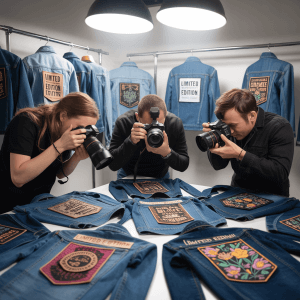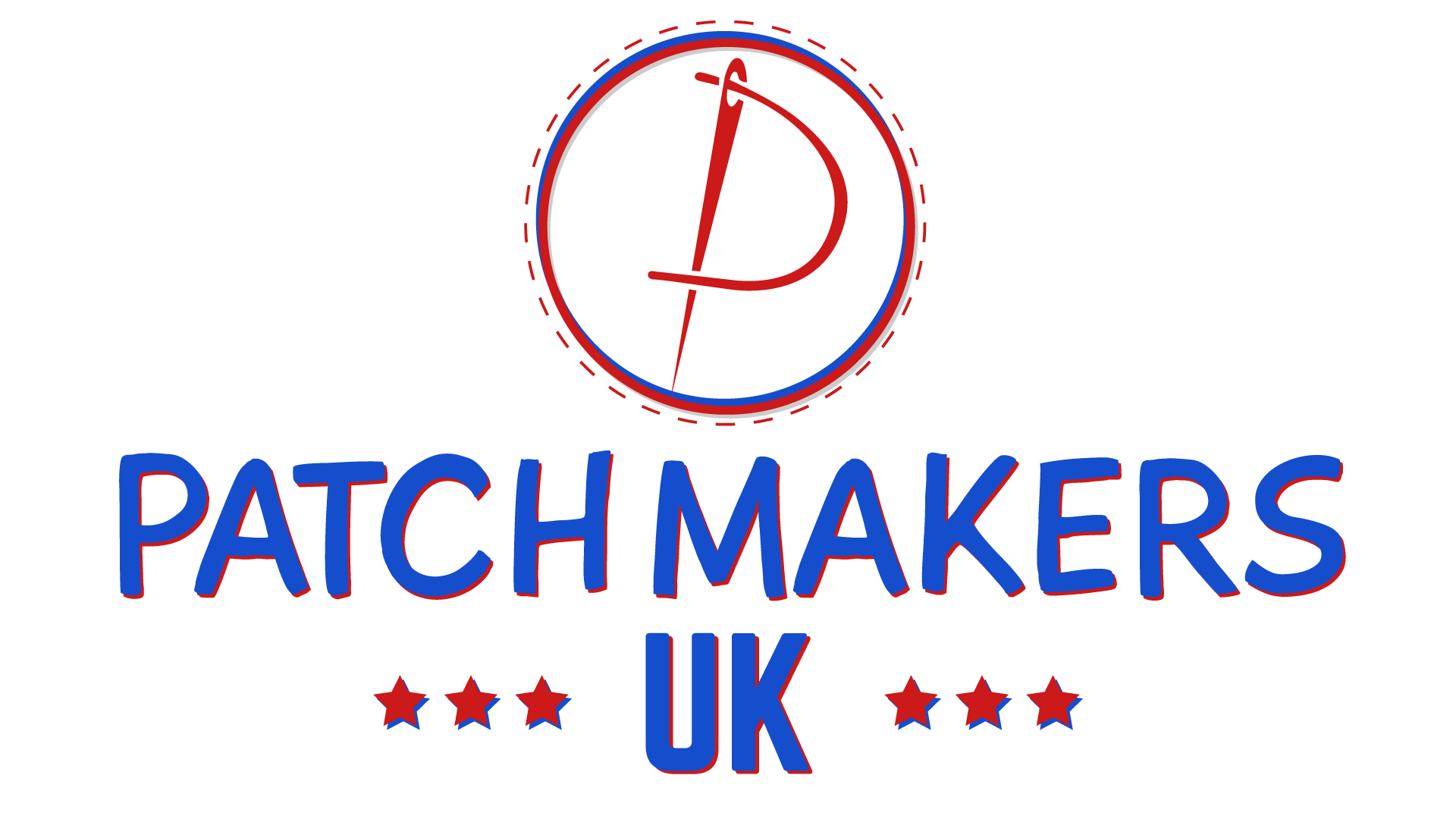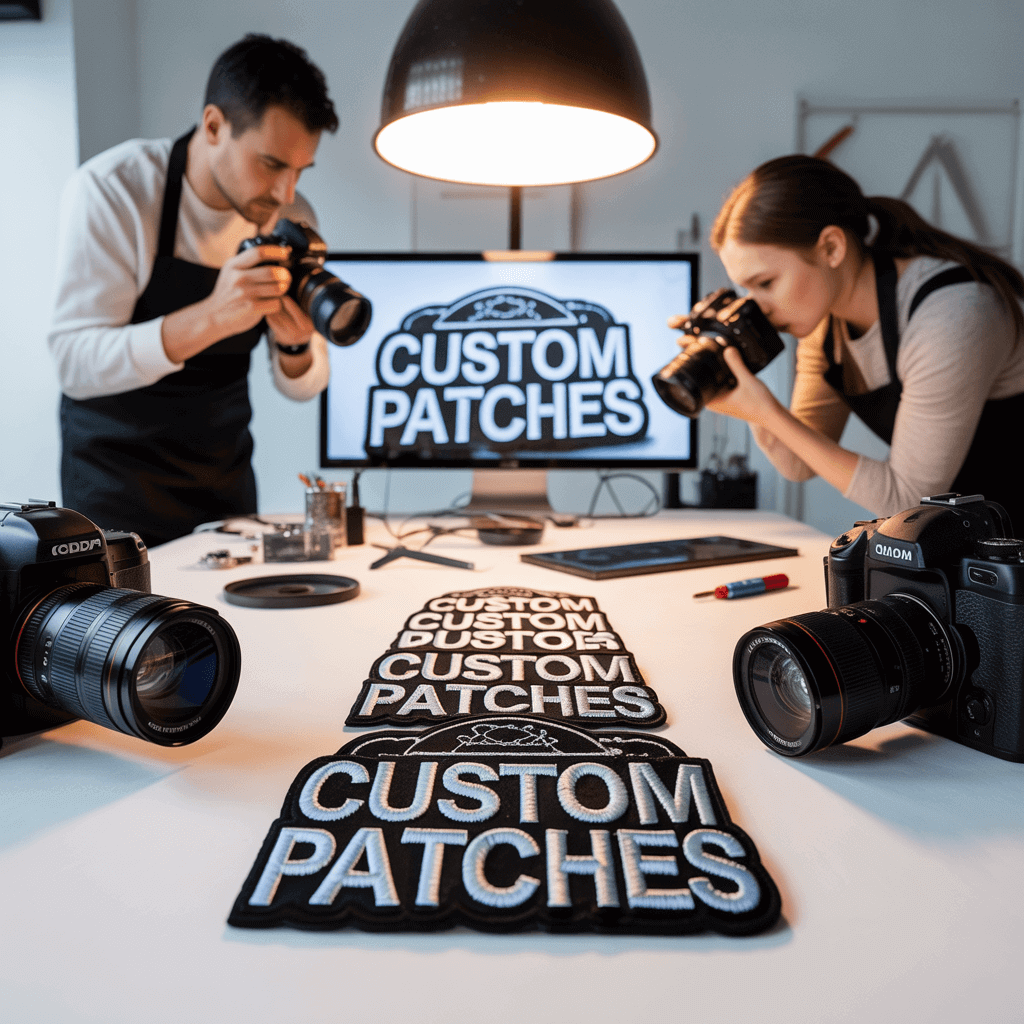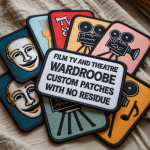Your patch might be the most beautifully designed thing since sliced bread got its own logo, but if your photos don’t pop, you’re selling yourself short. Businesses and brands are scrolling fast, and if that custom embroidered patch looks flat, blurry, or badly lit, it’s game over. Photography isn’t just a “nice to have”, it’s the difference between people clicking “add to cart” or casually moving on to the next flashy thing.
High-quality patch photos sell, because they tell a story of creatorship, texture, and quality. And if you’re investing in custom patches, whether for uniforms, events, promotions, or fashion, you’d better show them off like they’re red carpet material.
Light It Up (The Secret Sauce of Patch Photography)
Lighting is about brightness and about vibe. Get it right, and your patch looks bold, textured, and worthy of a brand. Get it wrong, and it’s like snapping a selfie under the kitchen light, flat and lifeless.
- Natural Light Wins (Most Days): Shoot near a window for soft, even light that brings out embroidery threads without nasty shadows.
- Artificial Done Right: LED softboxes or ring lights give consistency if you’re shooting bulk patches for your catalogue.
- Avoid Direct Flash: It flattens textures. Your chenille, 3D puff, or woven patch deserves depth, not “passport photo energy.”
Pro tip: Angle the light slightly from the side to highlight stitch work, this shows off the custom embroidery detail brands pay good money for.
Want more insight into how to design patches that look incredible even before you start snapping? Check out our full guide: Custom Patches UK – The Ultimate Guide to High-Quality Personalized Design.
Macro Matters (Zoom in, Don’t Wash Out)
If you’re not shooting macros, you’re missing half the game. People want to feel the patch through the photo. Macro shots highlight stitch density, thread sheen, and even how the backing blends.
- Show the Stitching: Macro brings the “wow” factor in custom embroidered patches, tight, crisp threads versus cheap, fuzzy knock-offs.
- Texture Tells Quality: Chenille looks plush, PVC looks sharp, and woven looks sleek. Macro sells the difference.
- Context Counts: Shoot a close-up but also give a wide shot. Businesses buying bulk need to see both the detail and how it looks on actual gear.
If you’re a brand ordering bulk patches for uniforms, events, or promotions, these macro shots are what help you decide whether you’re going for sew-on patches for clothes or quick iron-on patches.
Texture Shots (The Underestimated Sales Tool)
Texture is everything when it comes to patches. The difference between a custom PVC patch and a chenille varsity patch is tactile. But since you can’t rub a photo, the shot has to do all the talking.
- Angled Close-Ups: Slight tilts reveal thread shine or raised puff.
- Lifestyle Texture Shots: A biker patch on leather, a military patch on tactical gear, or a logo patch on a hoodie all show how textures interact with real fabric.
- Multiple Backdrops: Wood, denim, or stone surfaces help textures stand out.
For brands, texture shots are proof of quality. A UK patch company with free shipping may sound appealing, but when you see the craftsmanship up close, that’s when the order button gets clicked.
Why Businesses Can’t Afford Bad Patch Photos
If you’re a small business, bad patch photos kill conversions. If you’re a corporate brand, they cheapen your reputation. In both cases, you’re losing money. Good photos show the product and showcase your identity.
- Event Planners: Need patches that wow attendees? Show them glowing under stage lights.
- Sports Teams: Show mascots embroidered in high-def macro shots so parents know they’re paying for quality.
- Fashion Brands: Lifestyle shots sell, a custom logo patch on a hat isn’t just fabric, it’s streetwear currency.
Product Shots vs. Lifestyle Shots (Use Both)
You need both. Product shots = clarity. Lifestyle shots = vibes. Together, they convince buyers.
- Product Shots: Neutral backgrounds, clear textures, multiple angles.
- Lifestyle Shots: The patch “in the wild”, whether on uniforms, bags, or jackets.
Think about custom biker patches for jackets. On a white background, you see the detail. On a biker’s leather cut in a lifestyle shot, you feel the culture.
And yes, it’s perfectly fine to mix it up: flat lays, angled shots, group photos, or even patches spilling out of a pouch. Creativity sells.
Editing Magic (Less “Photoshop Fail,” More Brand Impact)
Good lighting and sharp macros are a killer start, but let’s be real, raw photos are only half the game. Editing is where you polish your patches into scroll-stoppers.
- Colour Correction: Make those reds punchy and those blues royal. Embroidery threads deserve to look as bold in photos as they do in real life.
- Sharpness Without Overkill: Don’t crank it so high it looks like a bad HDR meme. Just enough to make stitches crisp.
- Clean Backgrounds: Dust specks and lint show up more than you think. A quick edit keeps the focus on the patch, not your desk crumbs.
And no, editing isn’t “cheating.” It’s about presenting your patches at their best, just like models get good lighting, your patches deserve the glow-up too.
Consistency Is King (and Queen)
Patch photos without consistency look messy. And messy doesn’t sell. If you’re building a catalogue of custom embroidered patches or posting product drops for your fashion line, your photos should all feel like they belong in the same family.
- Use the Same Background Style: White or neutral works for clarity. Lifestyle shots? Keep a theme (urban streets, workplace, outdoor).
- Match the Lighting Setup: Switching from warm yellow to icy blue tones screams “DIY.” Brands crave uniformity.
- Same Angles, Same Editing: If your custom logo patches for jackets are shot at eye-level, don’t suddenly flip the script for your bag patches. Consistency builds trust.

Where Patch Photography Pays Off Big
You might be thinking, “Do I really need all this fancy patch photography?” The short answer: absolutely. The slightly longer answer: because your patches are more than merch, they’re marketing tools.
- Websites & E-Commerce: Crisp patch shots = higher conversions. Nobody spends £100 on bulk patches if the product pic looks like it was taken with a potato.
- Social Media: Instagram, TikTok, Pinterest, patch photos thrive on visuals. Macro and lifestyle shots boost engagement like crazy.
- Lookbooks & Catalogues: Want to pitch bulk custom patches for uniforms or sell to corporate clients? Professional patch photography sets you apart.
- Trade Shows & Festivals: A well-shot patch banner or stand instantly draws people in.
The Extra Tricks (Creative Angles & Storytelling)
Want to go beyond basics? Here are a few hacks that make businesses double-take:
- Flat Lay Storytelling: Patches next to the items they’ll be sewn on (jackets, hats, workwear). Gives buyers a mental picture.
- Group Shots: Show variations side by side like custom PVC patches, woven patches, and chenille patches all in one frame. Comparison = more orders.
- Action Shots: Your patch actually being ironed or sewn onto fabric. This not only educates but sells the “ease of use” factor.
This is exactly the kind of visual storytelling that helps brands with promotional patches for marketing or custom patches for events show off their flexibility.
Don’t Sleep on Lifestyle Placement
It’s 2025, nobody buys purely on specs. They buy vibes. Lifestyle placement sells the patch lifestyle.
Think about it:
- A custom biker patch on a leather vest under streetlights.
- A corporate logo patch on a neat polo during a brand event.
- A school mascot patch popping on a hoodie during a pep rally.
That’s not just photography. That’s free marketing content that sells without hard selling. If you need inspo on patch styling itself, check out Your Trusted Go-to Source for Quality Custom Patches in the UK.
DIY vs. Hiring a Pro Photographer
Here’s the big debate. Do you DIY or splash out on a pro?
- DIY: Works if you’ve got decent gear and patience. Great for small brands testing waters.
- Pro Photographer: Worth it for bigger brands, catalogues, or any business that needs to look polished AF. Professionals know lighting setups, editing tricks, and how to make embroidery sing.
And let’s be real, sometimes paying up front for great visuals saves you from tanking sales later.
FAQs
Q1. Why is photography important for selling custom patches?
High-quality photography makes patches look professional, boosts customer trust, and increases conversions across websites, e-commerce, and social media.
Q2. What’s the best background for patch photography?
Neutral backgrounds like white, grey, or beige work best for clarity. For lifestyle shots, choose consistent themes that align with your brand.
Q3. Should I hire a professional photographer for patch photos?
If you’re a business selling patches in bulk or creating catalogues, hiring a pro ensures consistency and polished results. Small brands can start with DIY.
Q4. How can lifestyle photography help with patch marketing?
Lifestyle shots show custom patches in real-world use, like on jackets, uniforms, or accessories, which helps buyers visualise value and boosts engagement.
Q5. Can editing improve patch photos without looking fake?
Yes, basic editing like colour correction, sharpening, and background cleanup makes patches look crisp and vibrant without overdoing it.
Q6. Which platforms benefit most from great patch photography?
Websites, online shops, Instagram, TikTok, Pinterest, catalogues, and trade shows all rely on strong visuals to drive sales and brand recognition.
Good Photos = More Orders
Patch photography is a conversion gold. Businesses and brands who get this right see better engagement, more bulk orders, and stronger customer trust.
So whether you’re showing off custom embroidered patches for hoodies, team patches for sports uniforms, or personalised clothing patches for a small business launch, remember, photos are proof of your brand’s value.
At Patch Makers UK, we help businesses show them off the right way. If you’re ready to upgrade your patch game, from design to photography-ready quality, hit our Patch Makers UK team, we’ll make sure your patches look as good on camera as they do in person.





